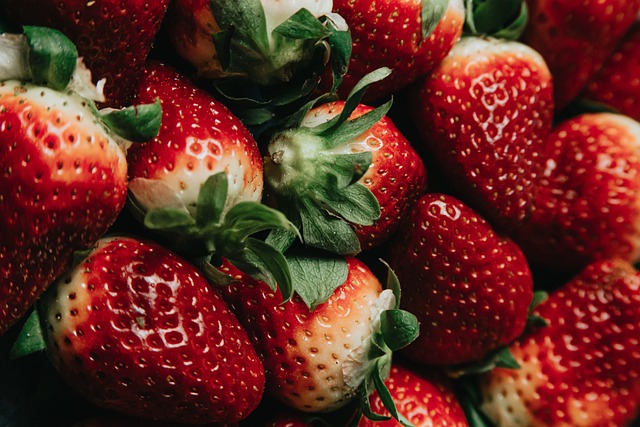In the quest for a balanced and nutritious diet, fiber often takes a backseat to macronutrients like protein, fats, and carbohydrates. However, dietary fiber is a cornerstone of health that deserves far more attention than it typically receives. Found primarily in plant-based foods, fiber plays a vital role in supporting digestion, maintaining a healthy weight, and reducing the risk of chronic diseases. In this article, we’ll explore why fiber is so essential, its different types, and how to incorporate more of it into your daily meals.
What Is Fiber?
Fiber, also known as dietary fiber, refers to the indigestible parts of plant foods that pass through your digestive system relatively intact. Unlike other nutrients, fiber isn’t broken down into smaller components by your body. Instead, it travels through your stomach, small intestine, and colon, providing numerous health benefits along the way.
There are two main types of fiber, each with unique roles:
- Soluble Fiber : Dissolves in water to form a gel-like substance. It helps lower cholesterol levels, regulate blood sugar, and promote feelings of fullness.
- Sources : Oats, beans, lentils, apples, citrus fruits, carrots, and barley.
- Insoluble Fiber : Does not dissolve in water and adds bulk to stool, aiding in regular bowel movements and preventing constipation.
- Sources : Whole grains, nuts, seeds, vegetables (like cauliflower and green beans), and the skins of fruits.
Both types are equally important, and a well-rounded diet should include a mix of both.
The Health Benefits of Fiber
Fiber is much more than just a digestive aid. Its impact on overall health is profound and multifaceted:
1. Promotes Digestive Health
One of the most well-known benefits of fiber is its ability to support a healthy digestive system. Insoluble fiber adds bulk to stool, making it easier to pass and preventing constipation. Soluble fiber, on the other hand, feeds beneficial gut bacteria, promoting a healthy microbiome. A balanced gut microbiome is linked to improved immunity, better mental health, and reduced inflammation.
2. Supports Heart Health
A high-fiber diet is strongly associated with a reduced risk of heart disease. Soluble fiber binds to cholesterol particles in the digestive system and helps remove them from the body, lowering LDL (“bad”) cholesterol levels. Additionally, fiber-rich foods tend to be nutrient-dense and low in unhealthy fats, further supporting cardiovascular health.
3. Regulates Blood Sugar Levels
For individuals with diabetes or those at risk of developing it, fiber is a game-changer. Soluble fiber slows the absorption of sugar, helping to stabilize blood glucose levels and prevent spikes. This makes fiber-rich foods an excellent choice for managing insulin sensitivity and reducing the risk of type 2 diabetes.
4. Aids in Weight Management
Fiber-rich foods are often more filling because they take longer to digest. This can help you feel satisfied for longer periods, reducing overall calorie intake. Moreover, many high-fiber foods are low in calories, making them ideal for weight loss or maintenance.
5. Reduces Cancer Risk
Studies suggest that a diet high in fiber may lower the risk of certain cancers, particularly colorectal cancer. Fiber helps move waste through the digestive tract more efficiently, reducing the time harmful substances spend in contact with the intestinal lining.
6. Enhances Skin Health
Believe it or not, fiber can even benefit your skin. By aiding in the elimination of toxins and waste products, fiber helps reduce the likelihood of acne and other skin issues caused by poor digestion.
How Much Fiber Do You Need?
Despite its importance, most people fall short of the recommended daily intake of fiber. According to dietary guidelines:
- Men : Should aim for about 38 grams of fiber per day.
- Women : Should aim for about 25 grams of fiber per day.
Children and older adults generally require slightly less, but meeting these targets can be challenging without conscious effort.
Best Sources of Fiber
Fortunately, fiber is abundant in whole, minimally processed foods. Here are some excellent sources:
Fruits :
- Apples (with skin)
- Pears
- Berries (raspberries, blackberries)
- Bananas
Vegetables :
- Broccoli
- Brussels sprouts
- Sweet potatoes (with skin)
- Carrots
Whole Grains :
- Oats
- Quinoa
- Brown rice
- Whole wheat bread and pasta
Legumes :
- Lentils
- Chickpeas
- Black beans
- Split peas
Nuts and Seeds :
- Almonds
- Chia seeds
- Flaxseeds
- Sunflower seeds
Tips for Increasing Fiber Intake
Transitioning to a higher-fiber diet doesn’t have to be overwhelming. Here are some practical tips:
- Start Gradually : Adding too much fiber too quickly can cause bloating and gas. Increase your intake slowly over a few weeks to allow your digestive system to adjust.
- Choose Whole Foods : Opt for whole fruits and vegetables instead of juices, and select whole grains over refined grains.
- Snack Smart : Swap processed snacks for fiber-rich options like fresh fruit, raw veggies with hummus, or a handful of nuts.
- Add Legumes : Incorporate beans, lentils, or chickpeas into soups, salads, or main dishes.
- Read Labels : Look for products labeled “high in fiber” or “good source of fiber.” Aim for at least 3-5 grams of fiber per serving.
- Drink Plenty of Water : Fiber works best when paired with adequate hydration. Drinking enough water ensures smooth digestion and prevents discomfort.
Common Myths About Fiber
Let’s debunk a few misconceptions that might be holding you back:
- Myth : Fiber is only important for preventing constipation.
- Reality : While fiber does aid digestion, its benefits extend far beyond bowel regularity, impacting heart health, weight management, and more.
- Myth : You need fiber supplements to meet your needs.
- Reality : Whole foods are always the best source of fiber. Supplements should only be used if recommended by a healthcare provider.
- Myth : High-fiber diets are bland and boring.
- Reality : With a little creativity, fiber-rich meals can be delicious and satisfying. Think hearty grain bowls, vibrant salads, and flavorful bean dishes.

Leave a Reply